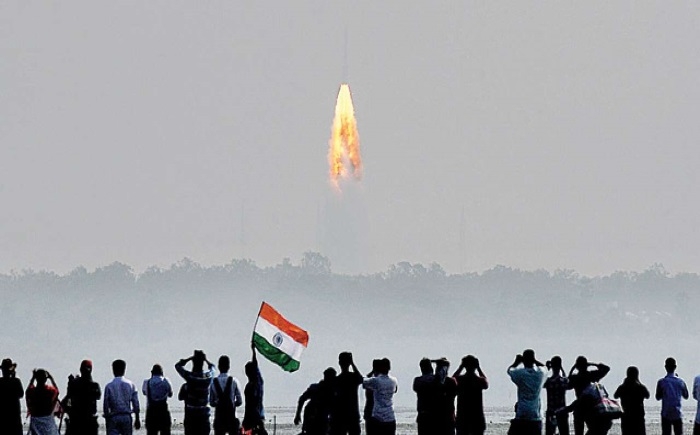India's ambitious first manned mission Gaganyaan Programme will be a reality soon; gets cabinet nod

New Delhi, Dec 28: Indigenous human spaceflight Programme, “Gaganyaan”, carrying three human members crew for minimum seven days in space at total cost of Rs. 10,000 crores, Low minister Ravi Shankar Prasad announced today. Union cabinet has approved a budget for this programme, today.
Gaganyaan will help India become the fourth nation to send humans to space. The announcement of the Gaganyaan project was first made by PM Modi on India’s 72nd Independent day.
On this occasion, Ravi Shankar Prasad said, “Gaganyaan programme is a great project in pursuit of India’s space autonomy. With the support of academia, the scientific community, industry, and ISRO launch this programme within 40 months after the approval. It is a great initiative to enhance India’s space power. Gaganyaan is the first time we are sending a human in space, it is a big step by India.
ISRO expects to deploy its biggest rocket, the Geosynchronous satellite launch Vehicle Mark III (GSLV Mk III), to send three Indians into space from the Sriharikota spaceport in Andhra Pradesh.
ISRO hopes to launch the first mission within 40 months. The plans are the “demonstration Phase” includes undertaking two unmanned flights and one human flight using Indian Technology to catapult a crew of three into low earth orbit for 7 days. ISRO gave a deadline of 2022 for this launch.
India tested its re-entry technology through the Satellite Recovery Experiment in 2007 when a 550-kilogram satellite was sent into orbit and then safely brought back to earth.The experiment tested the lightweight silicon tiles that can protect any spaceship as it re-enters the earth's atmosphere.
Later, in 2014, India tested a Crew Module Atmospheric Re-entry Experiment (CARE), where a 3,745 kg space capsule - a prototype of the crew module that will be used by the Indian astronauts - was launched into the atmosphere on the first flight of the GSLV Mk III and then safely recovered from the Bay of Bengal.
Earlier this year, ISRO carried out a crucial Pad Abort Test on July 5, when a 12.5-ton crew module was tested to make sure in case of an accident on the launch pad, the crew can be rescued safely.